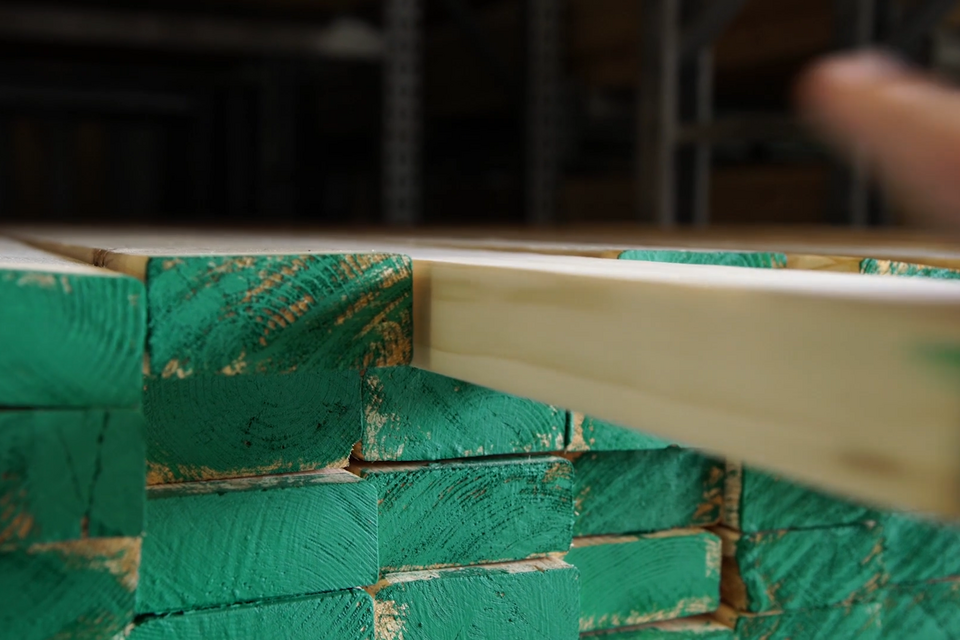In February, the market seemed to move in sympathy with the weather, rapidly changing from chaotic to tranquil and then back again on a daily basis, leaving little hint of what direction it was going in next. Trucking shortages, Covid shut-downs, extreme weather and fluctuating demand put forth hard questions to answer such as when to buy, how much to buy and, (the $100,000 question), how long will it take for an order to actually arrive. The current state of trucking (which has again vaulted to a new level of hardship) has caused additional uncertainty to the whole process. Quoted lead times at time of order are often extended 2-3 weeks more without notice. With the threat of increasing prices and growing lead times (but haunted by last year’s epic rally and correction), no buyer wanted to load the boat with a large volume of high-priced material but also couldn’t afford to be out of stock on anything as obtaining prompt material was virtually impossible. With trucking protests at the Canadian border, spring fast approaching and the uncertainty of prices and availability, buyers hedged their bets and, as the month progressed, erred on the side of caution and went all-in, which only helped to boost prices. With costs rising on par to last year’s rally, the hope is that just enough material has been bought to get through to the next inevitable correction but the grace of that timing remains to be seen. Business has been unusually strong for this time of year and it appears that spring won’t disappoint. The key factor to this particular market has been transportation, as there appears to be plenty of wood for sale, but few ways to deliver it in a reasonable time. If the trucking situation improves, there should be a reprieve but, as of print, the market is on an upward trajectory and, although the verdict is still out for how high or long it may go, sales are such that we anticipate that prices will likely increase for the duration of March.
There has been little positive news to report about the lumber market in recent years, but we do have one good thing that is growing out of a bad one: the Softwood Lumber Duty. The Softwood Lumber Duty (which is an anti-dumping and countervailing tariff against Canadian lumber mills) was increased in December 2021 from 8.99% to 17.91%. However, it was recently announced that, after a third review by the U.S. Department of Commerce, it will be coming back down again as their 2020 investigation deemed the fines too high. This next adjustment will bring the rate back down to 11.64% and, although it’s a paltry reduction in comparison to the price swings we’ve endured, we’re grateful for this action. The hitch is that it won’t go in to effect for six months, but time has proven to help us in that area as well. For instance, if we take a glance at where the market has tracked over the past year using the Random Lengths Framing Composite, one can truly see the volatility that we are all living with. The Random Lengths Framing Composite (RLFC) is a representative dollar value of the cost of several key framing items and is used to measure the performance of lumber’s value in the market. Pre-pandemic, we operated in the $350-450 range for years with occasional lows in the $200’s and highs in the $500’s but, in looking at January 2021, the RLFC was at $874. By the end of May 2021, it had increased to $1514 and then, by the 1st of September, deflated to $389. Many surmise that, when the market peaked in May, budgets couldn’t be met so many contractors sat it out until it corrected. We know this is certainly true in many cases, but another factor was the fear-instilled lumber buying that led up to the peak which, after it collapsed, left many yards up to their eyeballs with high-priced stock for months. As a result, the RLFC actually over-corrected in September 2021 but has been moving upward ever since and is now at $1271, as of print. If there is a constant, its change and if the lumber market has taught us anything, it’s not to over-react when things get hairy. Let’s hope some restraint has been used to help us avoid having a repeat of 2021 and, instead, find a happy medium where we can all survive with a little less stress and price hardship. Where the market may truly settle in six months may be unknown at this time but, with volatility and uncertainty as it is, we’ll gladly welcome a planned reduction to lumber prices courtesy of the Softwood Lumber Duties and hope that, in time, we see more moderation and fewer extremes with every facet of our industry.
While we were in unchartered territory at the beginning of the pandemic, two years later we have become so much better at navigating our way through the choppy waters of this industry. Despite market volatility, we haven’t lost sight that our job is to buffer you against extremes and we do so by clipping the peaks and valleys out of these wild swings. We are proud to say that we are better than we ever were in terms of strength, resilience and flexibility and, as a team, work exceptionally hard to ensure that you have the quality products that you need when you need them. Thank you for your business.
